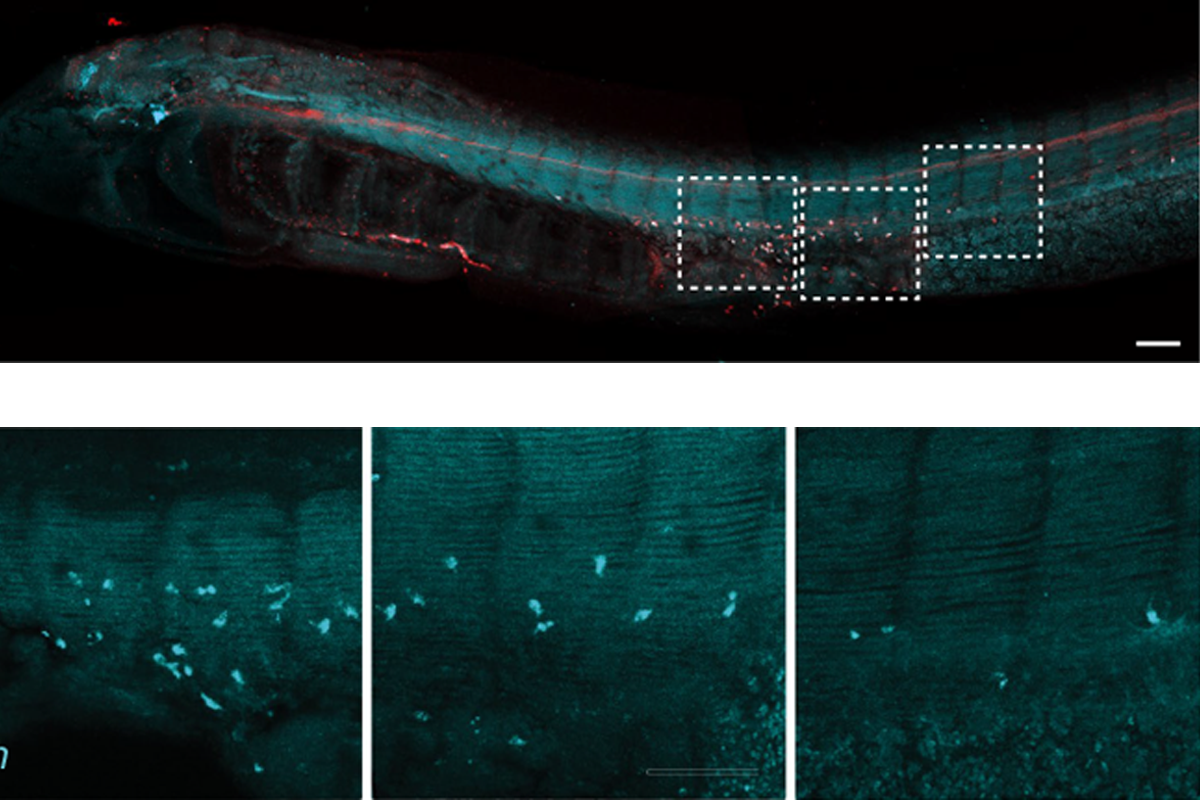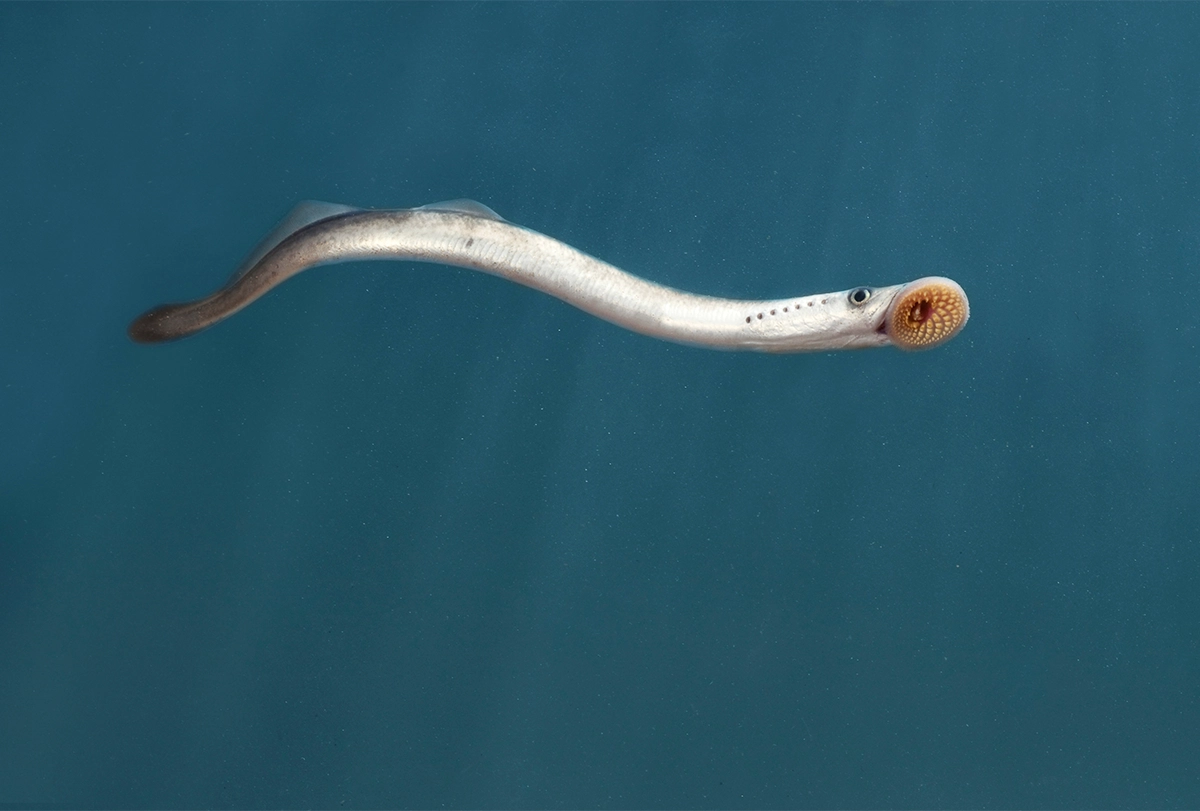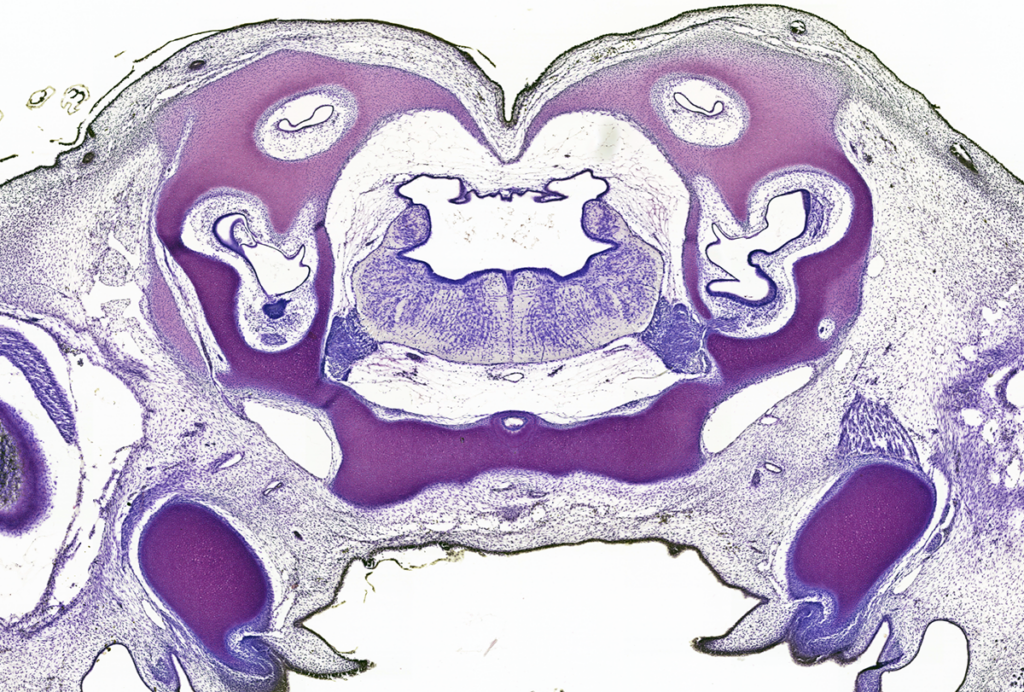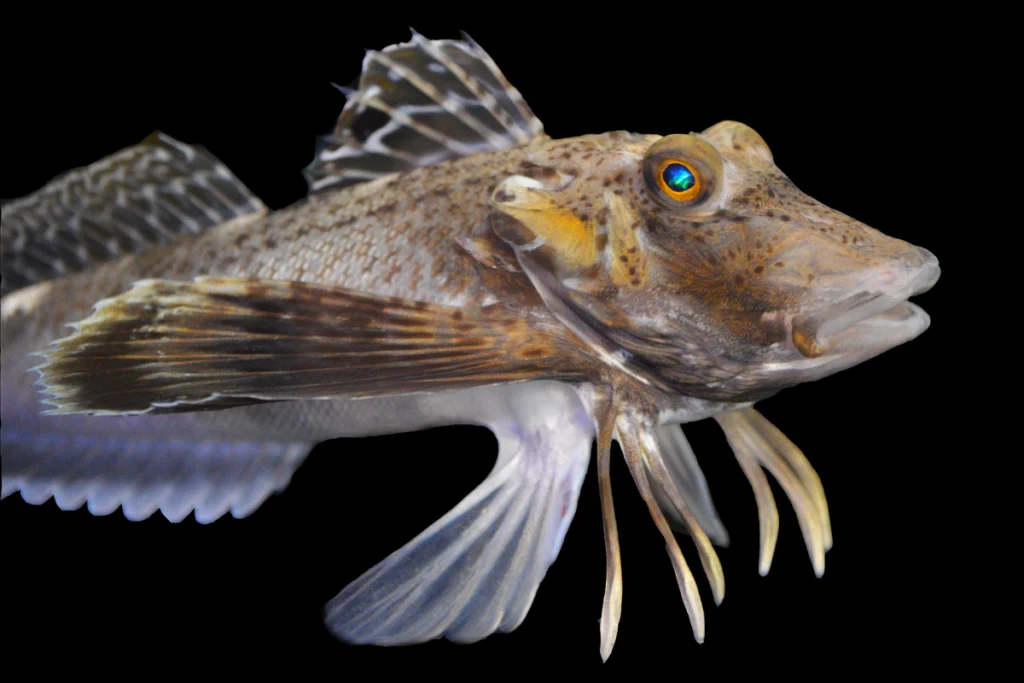
New look at lampreys rewrites textbooks on origins of sympathetic nervous system
Sympathetic neurons pepper the embryos of the jawless fish—Earth’s first vertebrates—and overturn the idea that “fight or flight” was an innovation of jawed vertebrates.
The sympathetic nervous system may have originated in jawless fish—not tens of millions of years later as previously thought, according to a study published today in Nature.
Anatomical work dating back to the 19th century suggested that the sympathetic nervous system was present only in jawed vertebrates. Yet the sea lamprey, the new findings reveal, sports clusters of sympathetic neurons along its trunk and expresses several genes involved in the “fight-or-flight” system, the response that kicks into gear when an animal perceives a threat.
“Whenever new research causes troves of textbooks to need corrections, that’s always surprising,” says Tyler Square, assistant professor of molecular genetics at the University of Florida, who was not involved in the study.
The team behind the new work decided to re-examine conventional wisdom after a postdoctoral researcher in the lab produced microscopy images of lamprey embryos stained for neurons in the animals’ gut. The stain highlighted some “small sort of concentrations of cells” that looked a lot like sympathetic neurons, recalls lead investigator Marianne Bronner, professor of biology at the California Institute of Technology.
“I said, ‘Oh, those shouldn’t be there.’ So then we decided to delve deeper into it.”
T
he unexpected neurons express several key genes—specifically ASCL1, PHOX2 and HAND—involved in the sympathoadrenal system, the team discovered using a suite of techniques, including immunohistochemistry, in situ hybridization chain reaction and RNA sequencing.These are “all transcription factors that are known to be important in sympathetic neuron differentiation in mammals,” Bronner says.
The cells also produce an enzyme called tyrosine hydroxylase (TH) that is crucial for the synthesis of noradrenaline, which is released during the fight-or-flight response. A subset of these TH-positive cells derive from the animals’ neural crest, subsequent cell-fate-mapping experiments revealed.

Lampreys are the “most primitive vertebrates that have a neural crest,” Bronner says. This structure comprises a group of temporary stem cells present during embryonic development that migrate and give rise to numerous parts of the vertebrate body. They also give rise to sympathetic ganglia in jawed vertebrates and, as this study shows, jawless vertebrates too.
“The gene-expression data, their antibody detection, the RNA sequencing analyses, these are all totally rock solid. I’m 100 percent convinced that these are lamprey sympathetic nerves of some kind,” Square says.
B
ronner has studied the development and evolution of lampreys for more than 20 years. One reason her team overlooked these sympathetic nerves until now is because they arise in lampreys at a different, much later stage of embryonic development than in humans and other land vertebrates, the study suggests. Lampreys also have fewer sympathetic neurons.“We were looking for it, but we didn’t look at the right time,” Bronner says.
These new findings show the value in re-examining old hypotheses in developmental biology, says Maria Antonietta Tosches, assistant professor of biology at Columbia University, who was not involved in this study, because when anatomists described vertebrate development in the past, many molecular tools did not exist.
“There’s a lot of dogma in textbooks that is just there, ready to be just tested with modern methods,” she says.
Bronner continues to be interested in the evolution of the vertebrate nervous system and how we became “much more complicated” than invertebrates thanks to the neural crest, she says. “We’re trying to figure out how this elaboration occurred, and this sort of gives us a clue that when the peripheral nervous system of vertebrates was invented, it already had all the basic building blocks.”
Recommended reading

Digitization of ‘breathtaking’ neuroanatomy slide collection offers untapped research gold mine

How ‘walking fish’ feel, taste hidden food with their legs

Number-associated neurons help crows link values to symbols
Explore more from The Transmitter

Smell studies often use unnaturally high odor concentrations, analysis reveals

Developmental delay patterns differ with diagnosis; and more
